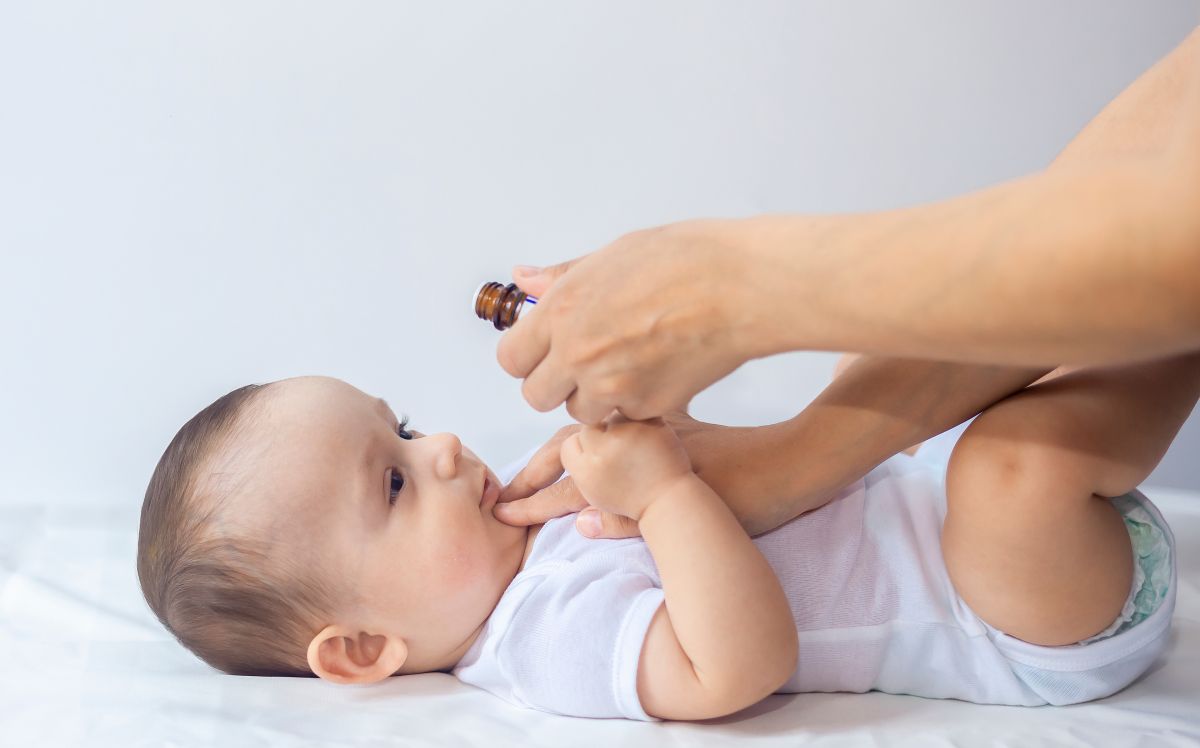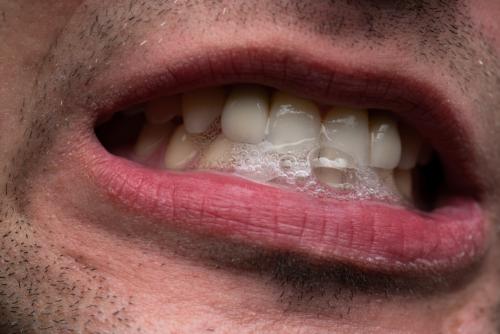How is rotavirus infection transmitted?

Infection with is common among children under the age of 5 and produces nausea and diarrhea. The virus spreads mainly by bringing dirty hands to the mouth, after touching contaminated surfaces or food. Rotavirus infection is the main cause of severe disease in children under 5 years of age. Medical specialists suggest that vaccination against this pathogen can protect children from the severe effects of the disease. However, vaccinated children can get infected and get sick, but the symptoms will be milder. Person-to-person transmission can easily occur in closed, risky environments.
Examples include homes, hospitals, nursing homes, kindergartens, etc. This article aims to present the mode of transmission of rotavirus infection, the incubation period of the virus, but also the manifestations of the disease. Also, some ways to prevent the infection are presented. Article content\n \n \n . ro or from the SfatulMedicului mobile application (iOS, Android)\n .
Thus, people can spread the virus if they do not wash their hands after using the toilet or after changing a child's diaper. . Rotavirus can survive for hours on hands and hard surfaces and can remain infectious in faeces for up to a week. In addition, people who have contracted this virus excrete significant amounts of viral particles before showing symptoms. Specialists consider that the infectious dose is between 10,000 and 10 million viral particles.
In general, the stool contains about 100 billion particles per milliliter. Although the fecal-oral route is the main cause of infection, scientists explain that people can also transmit rotavirus through the air, through sneezing. According to a specialist study, the transmission of rotavirus through airborne droplets can explain the rapid accumulation of anti-rotavirus antibodies in the first 3 years of a person's life, regardless of sanitary and hygienic conditions. However, further studies are needed to prove this point precisely. Hand-to-hand transmission is also believed to be responsible for the spread of the virus in closed environments.
. Such environments include homes, hospitals, care centers, kindergartens, schools, etc. Children can transmit the virus through direct contact with toys, food or other children. According to studies, children are most likely to contract rotavirus from January to June, and they can later transmit the infection to family members. In general, rotavirus infection occurs when viral particles enter the oral cavity.
This can happen when people come into contact with fragments of faeces that contain the virus. Such scenarios can be represented by various examples, such as putting dirty hands in the mouth, touching objects or surfaces that have not been properly sanitized, or eating or preparing food with unwashed hands. The incubation period is the notion that refers to the time interval between the moment when a person comes into contact with the virus and the moment when they show the first symptoms. Specialists believe that the incubation period for rotavirus is 2 days. However, there are also opinions regarding an incubation period of 1-3 days.
People are most likely to transmit the virus to others when they show symptoms, but also in the first 3 days after recovery. However, it should be known that the spread of the virus can also be possible in the days preceding the appearance of symptoms. As previously stated, the symptoms of rotavirus infection begin approximately 2 days after exposure to the viral agent. Among the most frequent manifestations are fever, nausea and vomiting. Abdominal pain and loss of appetite may also occur.
Rotavirus infection is the most common among infants and children. Adults who become infected with this virus tend to develop much milder symptoms. However, there is also a risk in their case of passing on the infection. Rotavirus infection can cause fluid losses associated with diarrhea and vomiting. This can be especially dangerous for infants and children, so the symptoms of dehydration must be recognized.
These include decreased urination, dryness of the mouth, tongue and throat, feeling dizzy, crying with little or no tears, unusual sleepiness or agitation and \. If symptoms of dehydration appear, a visit to the doctor is necessary. He can evaluate the situation, and if it is a case of severe dehydration, he can recommend the administration of fluids intravenously. According to medical specialists, the rotavirus vaccine protects 9 out of 10 children against serious forms of the disease. Vaccination of children is done by administering drops in the oral cavity.
A child may need two or three doses, depending on the type of vaccine he receives. It should be known that even vaccinated children can get sick, because natural infection and vaccination do not provide complete protection against a future infection. Children who have not been vaccinated may have more severe symptoms the first time they contract the virus. People who take care of children must wash their hands very well after changing diapers. However, rotavirus is resistant to most disinfectant detergents, including antibacterial products, and can end up infecting even the cleanest environments.
People who become infected with rotavirus must try to prevent dehydration. Drinking plenty of fluids is the best way to do this. Also, oral rehydration salts can be used, but it is indicated that they should also be used on the doctor's recommendation. In the case of children, doctors can recommend electrolyte solutions. Rotavirus infection is most common in childhood, and vaccination is the most effective way to prevent the onset of severe symptoms.
However, vaccination or natural infection will not protect against future infections with this virus, but will only reduce the chances of severe forms of the disease. To prevent the transmission of infection, the population must maintain good hygiene by washing their hands frequently, especially after using the toilet or changing diapers and before preparing meals or before eating. Rotavirus infection can lead to dehydration, a complication that can be particularly dangerous for infants and children. Dehydration can be prevented mainly by an increased intake of fluids, but doctors can also indicate other treatment options, so a visit to the doctor is very important. Bibliography:\r\n\r\n\r\n\r\n\r\n\r\n\n\n \n \n\n \n \n \n\n \n \n .
VICTOR GOMOIU\n \n \n . .
Source : sfatulmedicului.ro
Views : 1075
Popular Article
- (photo) Nude becomes art.
Posted: 2018-03-17, 9706 views.
- The harmful effects of air conditioning on the skin
Posted: 2017-06-08, 8394 views.
- 3 causes of dyed hair discoloration
Posted: 2017-06-15, 8266 views.
- Why early puberty occurs in girls: symptoms, favors, diagnosis and treatment
Posted: 2017-10-24, 8113 views.
- Good or bad skin treatments in the hot season
Posted: 2017-06-07, 7846 views.
Recommendations
- (photo) Nude becomes art.
Posted: 2018-03-17, 9706 views.
- The harmful effects of air conditioning on the skin
Posted: 2017-06-08, 8394 views.
- 3 causes of dyed hair discoloration
Posted: 2017-06-15, 8266 views.
- Good or bad skin treatments in the hot season
Posted: 2017-06-07, 7846 views.
- Risks of practicing sports on hot days
Posted: 2017-06-12, 7443 views.
 4 effective ingredients in the fight against acne.
4 effective ingredients in the fight against acne. How to get rid of hiccups fast
How to get rid of hiccups fast The wheat bran diet: the secret of lost pounds as if by magic
The wheat bran diet: the secret of lost pounds as if by magic The recipe that will sweeten your soul this weekend!
The recipe that will sweeten your soul this weekend!  Is it dangerous or not to refreeze meat after thawing it?
Is it dangerous or not to refreeze meat after thawing it?  The unusual sign of diabetes indicated by saliva.
The unusual sign of diabetes indicated by saliva. What to drink to boost your immune system.
What to drink to boost your immune system. 10 foods that help you never age.
10 foods that help you never age. What actually happens in your body if you drink a cup of coffee for breakfast
What actually happens in your body if you drink a cup of coffee for breakfast 5 surprising benefits of chia seeds
5 surprising benefits of chia seeds